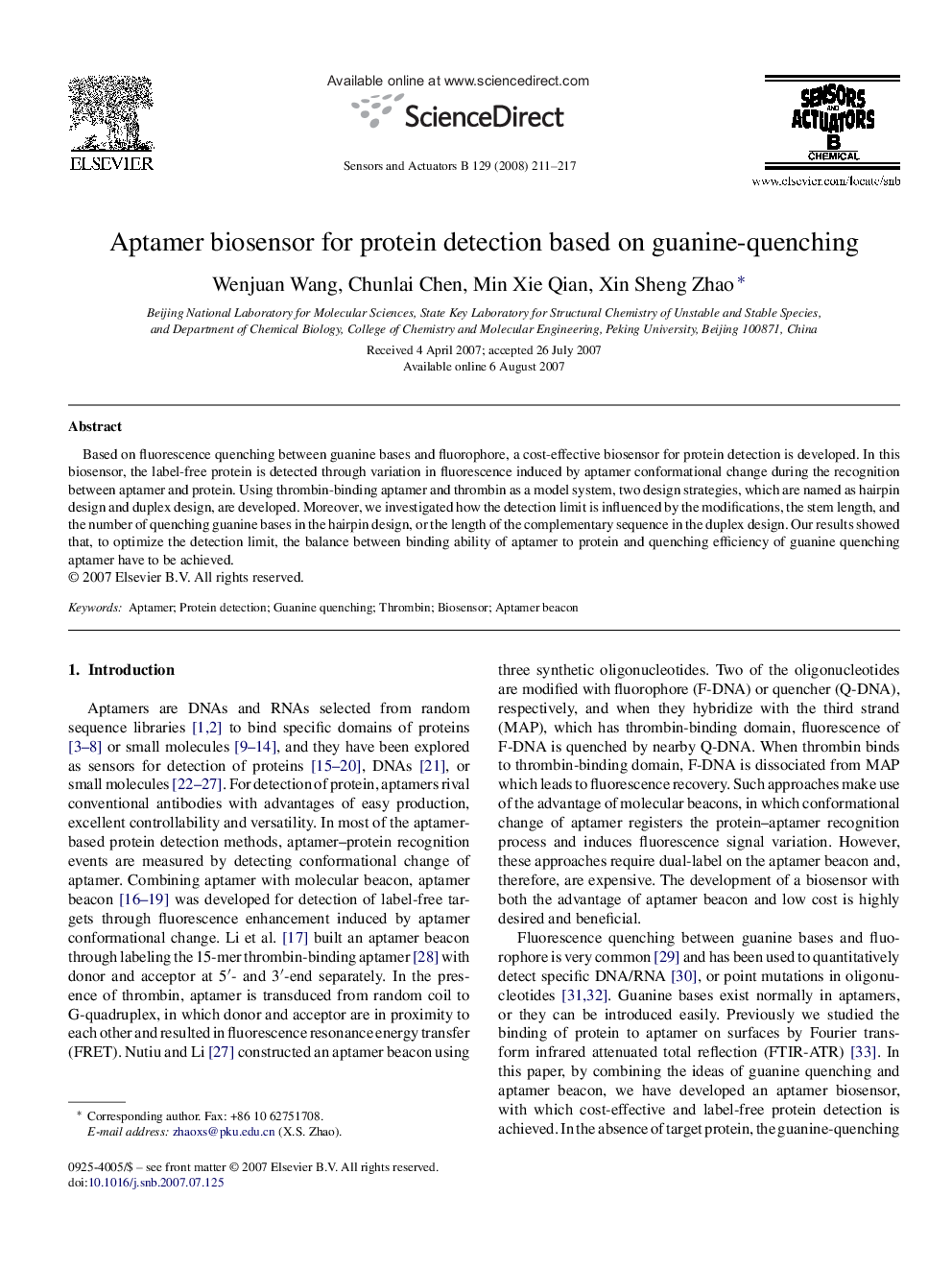| Article ID | Journal | Published Year | Pages | File Type |
|---|---|---|---|---|
| 741513 | Sensors and Actuators B: Chemical | 2008 | 7 Pages |
Based on fluorescence quenching between guanine bases and fluorophore, a cost-effective biosensor for protein detection is developed. In this biosensor, the label-free protein is detected through variation in fluorescence induced by aptamer conformational change during the recognition between aptamer and protein. Using thrombin-binding aptamer and thrombin as a model system, two design strategies, which are named as hairpin design and duplex design, are developed. Moreover, we investigated how the detection limit is influenced by the modifications, the stem length, and the number of quenching guanine bases in the hairpin design, or the length of the complementary sequence in the duplex design. Our results showed that, to optimize the detection limit, the balance between binding ability of aptamer to protein and quenching efficiency of guanine quenching aptamer have to be achieved.
